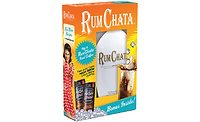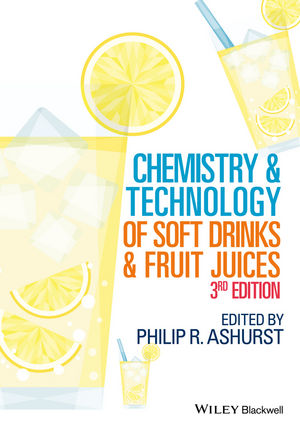New Options For Diet Drinks
BY SARAH THEODORE
For companies looking to
develop new diet products, the timing couldn’t be better… or
more challenging. On one hand, obesity and the need for diet products has
never been more prominent; but at the same time, consumers report they are
less likely to actually follow a diet or give up the products they love.
According to London-based Datamonitor, the market for
diet foods and beverages is expected to reach $112.4 billion by 2009. In
its recently released study “Overweight Consumers and the Future of
Food and Drinks,” the company reports that the United States has the
highest proportion of overweight and obese consumers, at more than 65
percent, but Germany and the United Kingdom follow, with more than 54
percent and 61 percent, respectively. It also indicates that consumers will
increasingly choose “lesser evil” products rather than
dedicated diet products, leaving the door open to a number of diet beverage
offerings from strictly diet to lower-calorie indulgent fare.
Ingredient company Tate & Lyle recently conducted
a consumer survey about attitudes toward diet products that found 47
percent of consumers believe they should reduce the amount of sugar in
their diets, yet only 24 percent actually incorporate that into their own
practices. Thirty-nine percent think a reduction in calories is important
to healthy eating, while only 20 percent report doing so in their own
lives. Consumers also reported they want to find additional health benefits
in their products such as omega 3, vitamins, minerals and calcium.
“Consumers want great-tasting products with
reduced levels of sugar or calories,” says Harvey Chimoff, director
of marketing, Americas, at Tate & Lyle. “Those companies that can
combine taste and functionality (no calorie or lower-calorie products that
taste great) will have an advantage.
“Based on our research, consumers are looking
for added-value functionality in beverages to provide extra nutritional
benefits,” he says. “This, in part, reflects how beverages are
slowly moving, or can move, to provide some of
the benefits consumers traditionally perceive from food such as meal
replacements or a snack to bridge meal occasions (i.e. between-meal
satiety).”
Paul Kim, principal scientist, beverage applications,
at Minneapolis-based Cargill adds: “Historically, consumers selecting
diet or lower-calorie beverages have asked, ‘Does it taste good, [is
it] free of the so-called diet taste?’ The sugar taste was the Holy
Grail everyone was looking for. Today, with more people consuming diet
beverages regularly, some diet drinkers feel that the regular beverages are
too sweet and heavy. So the objective becomes truly understanding your
consumers’ preferences and asking, ‘What tastes the
best?’”
Growing number of options
When it comes to low-calorie sweeteners for beverages,
a number of choices exist, from those offering zero calories to
full-calorie sweeteners that are released more slowly into the bloodstream
for a lower glycemic response.
Aspartame, produced by companies such as The
NutraSweet Co. and Ajinomoto, still is the
most-used alternative sweetener, and can be found in more than 6,000
products worldwide, according to the American Beverage Association. Despite
the market dominance of aspartame, many beverage companies are finding it
useful to use sweetener blends to customize the sweetness profile and
extend the shelf life of beverages. PepsiCo’s Diet Mountain Dew, for
example, was recently reformulated with a blend of aspartame, sucralose and
acesulfame potassium.
Nutrinova has long made blendability the hallmark of
its Sunett acesulfame potassium. The company reported increased use of the
high-intensity sweetener in new products launched in the United States in
2005.
“This shows a continued commitment in the sector
toward the use of Sunett and in combination with other sweeteners,”
says Graham Hall, president and chief operating officer of Nutrinova Inc.
“The data confirms our belief that successful combinations are hard
to beat.”
Also in the blending vein, Tate & Lyle developed
what it calls Rebalance to optimize sweeteners using its Splenda brand sucralose. “[Rebalance 601] is an optimized
blend of sweeteners designed to offer a natural sweetness profile while
reducing sugars up to 85 percent in fruit-flavored beverages,” says
Tate & Lyle Manager of New Technology Development Lori Napier.
“Independent sensory evaluation confirms that flavored waters made
with Rebalance 601 scored well or better than commercially available waters
for key attributes such as flavor delivery and sweetness profile.
Additionally, beverage Rebalance 601 maintains its sweetness profile during
processing and storage and is available as an easy-to-use
liquid.”
The company says the Rebalance system also can be used to develop full-calorie mouthfeel at no-calorie or
mid-calorie levels using other ingredients such as maltodextrin, starches
and gums, and can be used in carbonated beverages, juice drinks, fitness
and sports drinks, energy drinks, and soy and dairy drinks.
Cargill also expanded its sweetener portfolio last
year with several new options. “Cargill’s goal is to be a
one-stop ‘sweetness solutions provider’ for whatever needs our
customers have,” Cargill’s Kim says. “We intend to offer
the full range of sweetener options, from full-calorie to low- and
no-calorie. We are keenly aware that consumer needs have become more
diverse and no one ‘silver bullet’ will satisfy all.”
To that end, the company introduced the Xtend line of
all-natural, slowly digestible sweeteners. Xtend Sucromalt is a
slow-release carbohydrate that is digested more slowly than sugar for a
muted blood sugar response. Its syrup format and solubility makes it
applicable for systems that use bulk sweeteners such as high fructose corn
syrup, and it can be used in conjunction with high-intensity sweeteners.
Its Xtend Isomaltulose is made from sucrose but has 40
to 50 percent the sweetness of sugar. It is particularly useful in sports
beverages because it provides sustained energy with moderate sweetness. The
company also offers Ascend trehalose, a sugar made from starch that also is
a contender for sports drinks with its mildly sweet flavor.
Cargill’s Special FX is a full-calorie sweetener
with a higher level of fructose, resulting in a higher level of sweetness
so less is needed to produce the desired sweetness level. And the company
also offers erythritol, an all-natural no-calorie bulk sweetener. The
ingredient is 60 to 70 percent as sweet as sugar, and can be used in
combination with high-intensity sweeteners to round out the sweetness
profile.
Erythritol has the added benefit of being considered a
natural sweetener, which is becoming an important consideration given the
growth of natural and organic products. “Many people prefer
ingredients they consider to be ‘natural,’” Kim says.
“Therefore, it’s not surprising that food formulators are
looking for natural ingredients that provide sweetness but fewer calories
than traditional nutritive sweeteners do.”
Cargill recently worked with Honest Tea to develop an
erythritol sweetener for its new zero-calorie green tea, making it the
first organic zero-calorie sweetened beverage on the market.
Ventana Health Inc., San Clemente, Calif., used
erythritol in its new Zsweet all-natural, zero-calorie sweetener, which the
company says measures and tastes like sugar. Zsweet is made with a blend of
erythritol and food extracts commonly found in fruits and vegetables.
Zsweet can be used in hot or cold beverages and blended drinks.
Also playing up the natural side, Germany’s
Palatinit rolled out Palatinose Isomaltulose sweetener, which it calls the
’’wellness sweetener’’ for its sugar-like taste and
low glycemic response. The ingredient is a natural constituent of honey and
sugar cane, and has a mild sweet taste. It has the same caloric value as
sucrose, but is digested more slowly, helping to avoid peaks and lows in
blood sugar and blood insulin. According to the company, it can be used in
both instant and ready-to-drink beverages, and is especially useful in
sports drinks.
“We feel that Palatinose, a naturally derived
product, fulfills today’s expectations toward sports beverages in
terms of balancing good taste and healthy energy,” says Stephan
Hausmanns, business development manager at Palatinit.
It’s all about perception
In addition to sweeteners, a new array of sweetener
enhancers are becoming available to help product formulators make the most
of the sweeteners they use, and in some cases, even trick the senses into
perceiving more flavor.
Treatt USA expanded its line of from-the-named-food
(FTNF) Treattarome ingredients with Sugar Treattarome 9807, which is
distilled from cane sugar for an authentic, sweet flavor with no added
calories. The ingredient is water soluble, making it particularly suitable
for clear beverages, sodas and alcohol drinks. The company says Sugar
Treattarome works synergistically with non-nutritive sweeteners, and says
the creation of flavor systems designed to work with specific sweeteners is
receiving a lot of attention these days.
“Systems based on sucralose are rapidly taking
hold in the diet sector,” says Giles Bovill, global group marketing
manager at Treatt plc. “Flavors and other ingredients have to be
adjusted to work with this new reality. The sweetening effect of sucralose
is very different to that of aspartame and acesulfame K in beverages. There
is a lot of interest in finding new and exotic flavor ingredients that work
with sucralose to enhance the impression of a more ‘sugar-like’
sweetening effect.”
Treatt also developed Honey Treattarome 9801, which is
created from a blend of honeys such as orange blossom and clover for a
sweet honey flavor without the calories. Applications include beverage and
dairy products.
La Jolla, Calif.-based Senomyx is taking taste
perception a step farther by creating systems that enhance or modifiy the
perception of flavors through taste receptor-based technology. According to
the company, its work has focused on the development of savory, sweet and
salt flavor enhancement and bitterness reduction that will allow food and
beverage manufactures to reduce the amount of MSG, sugar and salt in their
products. While not currently used in any of their products, Senomyx
reportedly has collaborated with companies such as Campbell Soup Co., The
Coca-Cola Co., Kraft Foods Global and Nestlé to research the
technology.
Easing hunger
In addition to products offering fewer calories, there
is great interest in products that help boost the metabolism or make
consumers feel satisfied while eating or drinking less.
Orafti, Malvern, Pa., promotes its Beneo inulin
ingredient for its soluble fiber content and for the added sweetness it can
provide in a product. It recently developed diet water formulations
containing inulin, calcium lactate, sodium citrate, citric acid, natural
flavor, caffeine, sucralose and acesulfame potassium to showcase the
ingredient’s potential.
The company says Beneo
promotes good digestive health and is a prebiotic. In addition, it offers
zero net carbohydrates since it is a fiber. Orafti says its recent research
has shown inulin can help limit hunger and energy intake because the
ingredient ferments in the colon and modulates the release of hormones into
the blood that signal the brain, thus influencing appetite and ultimately
food intake.
Interhealth USA, Benicia, Calif., offers CitriMax and
SuperCitriMax, weight-loss ingredients extracted from the Garcinia Cambogia
fruit. The ingredients are GRAS-affirmed and have been shown to suppress
the appetite and fat production by inhibiting the enzymes that convert
carbohydrates into fat. The ingredient is odorless, colorless and 100
percent soluble, making it applicable to beverages. Fuze Beverage LLC added
CitriMax, as well as l-carnitine to its Healthy Infuzions Slenderize Drink,
and last year’s Fuze Slender Energy Drinks to help boost the
metabolism.
Elite FX Inc., Boynton Beach, Fla., also developed a
metabolism-boosting product last year with its Celsius brand, designed to
accelerate the metabolism through its “thermogenic blend of
nutrients, caffeine and botanicals,’” which consist of taurine,
guarana, green tea extract with 10 percent EGCG, caffeine, glucuronolactone
and ginger root extract. Green tea’s EGCG, or Epigallocatechin
Gallate, is a polyphenol compound believed to stimulate thermogenesis and
increase the number of calories burned by the body.
Elite FX says drinking 12-ounces of Celcius has been
shown to increase the metabolism by more than 12 percent over a three-hour
period. Some subjects in the company’s double-blind study burned an
additional 75 calories during the measured period without any extra
exercise.
Phytobase Nutritionals Inc., Orem, Utah, recently
introduced Bon-Java LeanCaffe with 950 mg. of African Hoodia Gordonii in
each cup to act as an appetite suppressant, as well as Rhodia rosea, an
herb thought to boost energy, enhance mood and increase fat-burning
mechanisms in the body.
“Coffee is one of the most consumable and loved beverages in the world, and thanks to the
addition of Hoodia Gordonii, people will now have the ability to control
their appetites and therefore eat less without changing any of their
habits,” says Phytobase Nutritionals President Sam Gur. “[The]
major emerging shift within the diet and weight management trend toward
‘satiety’ makes LeanCaffe a very unique and useful tool for
millions of people.”
Hoodia Gordonii is a cactus-like plant that Gur says
signals the brain that the body is in a state of satiety. “Simply
put, the brain is tricked into thinking there is enough energy (blood
sugar) and doesn’t need to eat, so it shuts down the hunger
mechanism,” he says.
Gur says the company has plans for additional weight
control products in the future. “There is a next generation of
products in the pipeline,” he says. “From our perspective, we
see exciting opportunities within the beverage category, and we are in
development of various concepts that will be first-in-category when
launched.” BI



